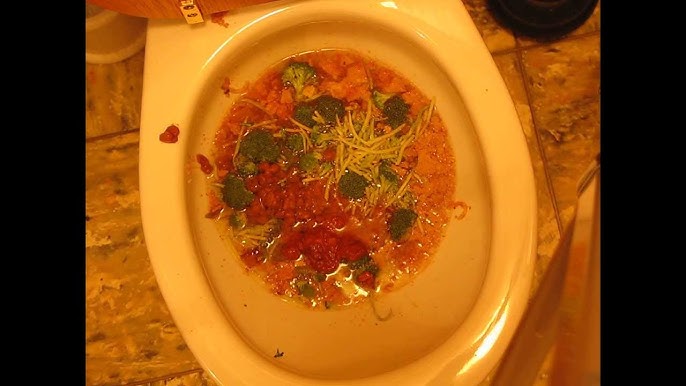Can You to Dispose of Food Waste in the Toilet?
Can You to Dispose of Food Waste in the Toilet?
Blog Article
This post further down in relation to Flushing Food Down the Toilet? is extremely remarkable. Don't bypass it.

Intro
Many people are typically confronted with the predicament of what to do with food waste, particularly when it involves leftovers or scraps. One typical question that occurs is whether it's all right to flush food down the commode. In this write-up, we'll explore the reasons why people may consider purging food, the repercussions of doing so, and alternative approaches for correct disposal.
Reasons why people might consider flushing food
Lack of recognition
Some individuals may not be aware of the prospective injury brought on by purging food down the bathroom. They may wrongly believe that it's a safe method.
Convenience
Purging food down the toilet may feel like a fast and very easy service to dealing with undesirable scraps, particularly when there's no neighboring garbage can available.
Laziness
In some cases, individuals might merely choose to flush food out of large laziness, without taking into consideration the repercussions of their actions.
Effects of flushing food down the commode
Environmental influence
Food waste that ends up in waterways can contribute to contamination and damage water environments. In addition, the water utilized to flush food can strain water sources.
Plumbing issues
Purging food can result in clogged up pipelines and drains, triggering costly plumbing fixings and troubles.
Types of food that must not be purged
Fibrous foods
Foods with fibrous structures such as celery or corn husks can get tangled in pipes and create clogs.
Starchy foods
Starchy foods like pasta and rice can take in water and swell, causing blockages in pipelines.
Oils and fats
Greasy foods like bacon or food preparation oils need to never be flushed down the toilet as they can strengthen and create blockages.
Appropriate disposal approaches for food waste
Utilizing a garbage disposal
For homes furnished with garbage disposals, food scraps can be ground up and flushed with the pipes system. Nevertheless, not all foods are suitable for disposal in this fashion.
Recycling
Certain food product packaging materials can be reused, decreasing waste and lessening ecological effect.
Composting
Composting is an eco-friendly method to take care of food waste. Organic products can be composted and made use of to improve soil for gardening.
The importance of correct waste management
Reducing environmental injury
Correct waste management techniques, such as composting and recycling, aid decrease air pollution and protect natural resources for future generations.
Securing pipes systems
By staying clear of the practice of flushing food down the commode, house owners can avoid expensive plumbing repairs and maintain the honesty of their plumbing systems.
Final thought
To conclude, while it might be appealing to flush food down the bathroom for ease, it is very important to recognize the potential consequences of this activity. By taking on proper waste management practices and throwing away food waste sensibly, people can add to healthier pipes systems and a cleaner atmosphere for all.
FLUSH FOOD DOWN THE TOILET?
FLUSHING FOOD CAN CAUSE BLOCKED DRAINS IN YOUR HOME
All of the plumbing fixtures in your home are connected to the same sewer pipe outside of your home. This outdoor sewer pipe is responsible for transporting all the wastewater from your home to the Council sewer mains. Even small pieces of food that go down the kitchen sink can cause problems for your sewer. It should therefore be obvious that flushing larger bits of food, such as meat, risks a clog in either the toilet itself or the sewer pipes. Flushing greasy food is even more problematic because oil coagulates when it cools, coating the interior lining of your pipes.
THE TOILET IS NOT A BIN
Food isn’t the only thing that people shouldn’t be flushing down the toilet. People use the toilet to dispose of all kinds of things such as tampons, makeup wipes, dental floss, kitty litter and even underwear. Water goes to great lengths to educate residents about the high costs and stress placed on wastewater treatment systems simply from people flushing the wrong stuff down the toilet. It costs taxpayers millions of dollars each year, and homeowners thousands in blocked drain repairs.
FLUSHING FOOD IS A WASTE OF WATER
Flushing food is a waste of our most precious resource - water. In June this year Level 1 water restrictions were introduced to protect water supply from drought conditions. Much of New South Wales continues to be affected by prolonged drought with recent figures revealing up to 97 per cent of the state remains in drought. Depending on whether you have a single or dual flush toilet, every single flush uses between five and 11 litres of water. In the current climate this is a huge amount of water to be wasting on flushing food that should be placed in the bin (or better yet, the compost).
https://www.jabplumbingsolutions.com.au/blog/can-you-flush-food-down-the-toilet

We were made aware of that report on What Can Happen If You Flush Food Down the Toilet? through someone on our other domain. Enjoyed our blog entry? Please share it. Let other people discover it. We value reading our article about What Can Happen If You Flush Food Down the Toilet?.
Show Details Report this page